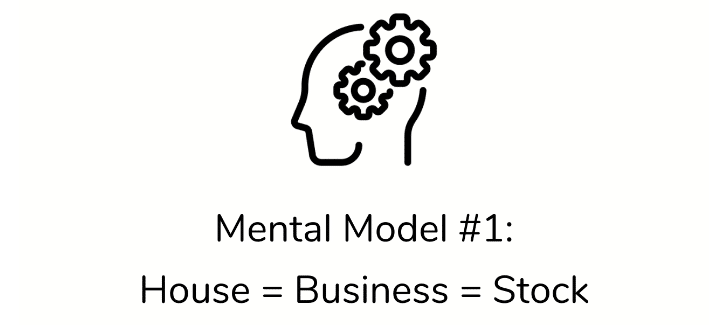Shortcut your learning process with a Mental Model used by Finance pros to better understand how Stocks work….by showing how the House you live in is a Business.
If you want a higher-level overview of Stocks and Bonds, check out our World of Finance: Stocks vs Bonds.
TL;DR
- While they might seem different at first glance, Houses, Businesses, and Stocks are all Cash Flow Generating Assets (or ‘CFGAs’ for short) with very similar characteristics.
- All CFGAs are: (1) Purchased in Cash, (2) Generate Cash Flows (or ‘Yield’) that accrue to their owners, and (3) Can be sold for Cash which generates a Gain or Loss.
The Importance of a Strong Conceptual Finance Foundation
If you were to build your house, would you scrimp on the materials that make up your foundation and risk having to make repairs later on? Clearly not!
A strong foundation is critical to building a house that will weather any storm. Similarly, as you build your foundational finance knowledge, you need strong core mental frameworks (aka Mental Models or Maps). Strong Mental Models will equip you to tackle more complex variations of finance concepts that you’ll inevitably face over time.
As a teacher, I’ve observed that students often have difficulty tackling higher-level finance concepts in the early years of their careers. This is typically due to the overly complex (and often outright confusing) manner in which foundational concepts are explained.
As a practitioner, I’ve observed that experienced professionals boil those same core concepts down into Mental Models. With this article series, we’ll share these core mental frameworks to help you learn these concepts now…instead of 10 years into your career. 🙂
In this article, I am sharing the Mental Model I believe everyone should start with to explain how Stocks work. It’s based on the idea that the House you live in is a Business. And that your House actually shares the same characteristics as Stock as well. Let’s dive in!
C.R.E.A.M.
Let’s start with the idea of a ‘Business’ at the most basic level.
At a core level with any Business, you begin by buying a Business (or for a start-up, you buy the items that will become your Business) at a certain price. You then receive cash flows from that Business, which accrue to you as the owner. Then, at some point down the road, you can sell the Business (hopefully at a value higher than the initial purchase price!) and make a profit (or ‘Gain‘) from the sale.
In finance speak, a Business is Cash Flow Generating Asset (let’s just call them ‘CFGAs’).
The 3 Core Characteristics of CFGA’s
As we’ll see shortly Houses and Stocks are also CFGAs. What ties ALL CFGAs together is that they have the following 3 Core Characteristics:
- Cash is used to Buy the Asset.
- The Asset generates Cash Flow that accrues to the Owner (which generates a ‘Yield’).
- The Asset can be Sold for Cash, which creates a Gain or Loss for the owner when they sell.
In this sense, the Wu-Tang Clan really got it right. In the business world, Cash really is central to everything.
Understanding the common threads that tie how Houses, Business, and Stocks work is a core foundational mental model that will help you better navigate the finance world.
Your House as a Business
People don’t usually think of their house as a business, but it really is. All you have to do is rent out your house and it becomes a ‘Business‘.
Let’s have a look at how the 3 Core Characteristics we mentioned above apply to your house.
Item #1: Purchase in Cash
To buy a house, you have to pay a Purchase Price (✓) in Cash, which officially makes you the owner of that property.
Item #2: Cash Flow Generation
You then rent the house out and collect rental payments. You also have to pay any expenses to maintain the house (e.g. maintenance, lawn care, garden care, etc.). The profit generated every month creates Cash Flow (✓) that accrues to you as the owner.
That Cash Flow earned creates an annual return (or Yield) on your investment.
We could go way down the rabbit hole on Yield. For now, just think of Yield as the cash generated within a period divided by your original investment. So, if you buy a house for $100 and it generates $10 per year of cash flow, your Yield is 10% ($10 cash flow / $100 investment).
Item #3: Sell For Cash
After a while, let’s say you decide to go travel the world. To fund the trip, you decide to Sell (✓) your property.
If you’re lucky, your house will increase in value (what is known as ‘Appreciation‘ in value). In that case, you’ll be able to sell the house for a higher price than what you originally paid. At the time of the sale, you would generate a ‘Gain’!

If you aren’t so lucky, the value of your house might decline (what is known as ‘Depreciation‘ in value). In that case, you would generate a loss and might need to change your travel plans.
Let’s Look at a ‘Traditional’ Business
Let’s say that instead of a House, you decide to buy a local pizza parlor Business. As we’re about to see, a Business also follows the 3 Core Characteristics of CFGAs. Let’s see how!
You’d start the process by paying the Purchase Price (✓) to buy the business. In the Finance world, we would say you paid for the ‘Enterprise Value’ of the Business…which is just a fancy term for the Purchase Price of the entire business.
As people come in and enjoy your pizza, the money you generate (minus your expenses) creates Cash Flow (✓). This Cash Flow accrues to you as the owner of the pizza parlor. Similar to the House example, the cash flow generates a return (or Yield) on your original investment.
Finally, selling a traditional Business is similar to selling a house.
If the value of your business has grown, then buyers will be willing to pay a higher price (or Enterprise Value). As a result, you’ll generate a Gain upon the Sale (✓) of the business. If instead, you sold the business at a lower price than what you originally paid, you would generate a Loss.
In short, a business exhibits exactly the same 3 Core Characteristics of CFGAs as a House. It’s purchased in cash, generates cash flow, and can then be sold (hopefully for a gain!).
In the next section, we’ll transition from how Businesses work to how Stocks work.
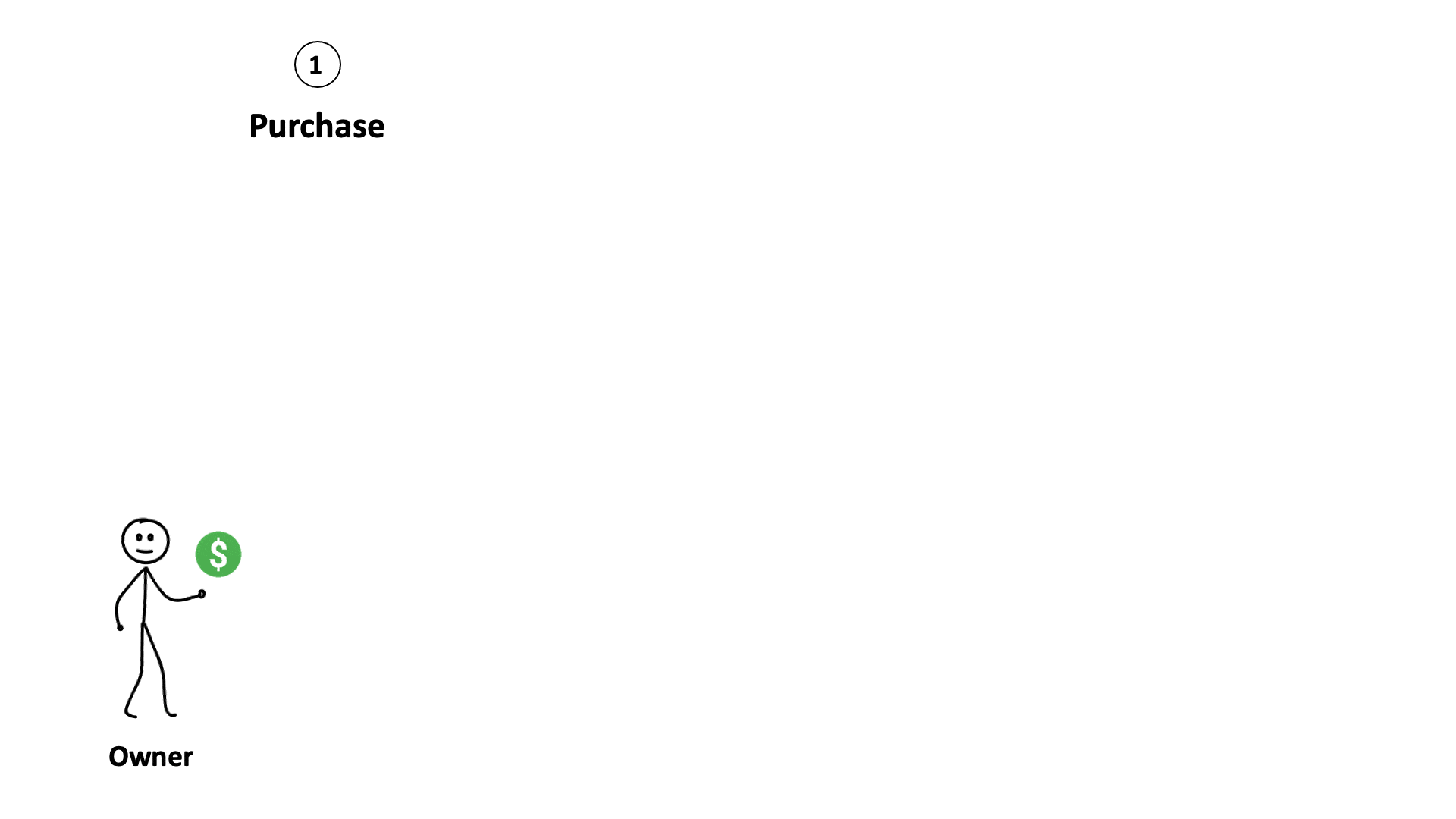
Let’s Talk About How Stocks Work
Let’s now look at Stocks and see how they also have the 3 Core Characteristics of CFGAs.
For this example, we’ll assume that we purchase the House and the Business in cash…without any debt. In real life, this is clearly not the case most of the time, but let’s keep it simple for now.
With a house purchase, there would usually be one owner. In the previous example, we assumed that you solely owned the business.
For many Businesses, however, ownership is typically divided into smaller units so it can have multiple owners. We refer to each unit of ownership as a ‘Share‘ of ‘Stock‘.
The Benefits of Dividing Ownership
Dividing ownership in this way has two major benefits:
- Buyers gain access to business ownership at a much lower price point. This is because each share costs less on a per-share basis.
- When a business wants to raise capital, the business isn’t reliant on just one person for funding. This allows businesses to raise LARGE sums of money from many investors, which the Business can then use to fund growth.
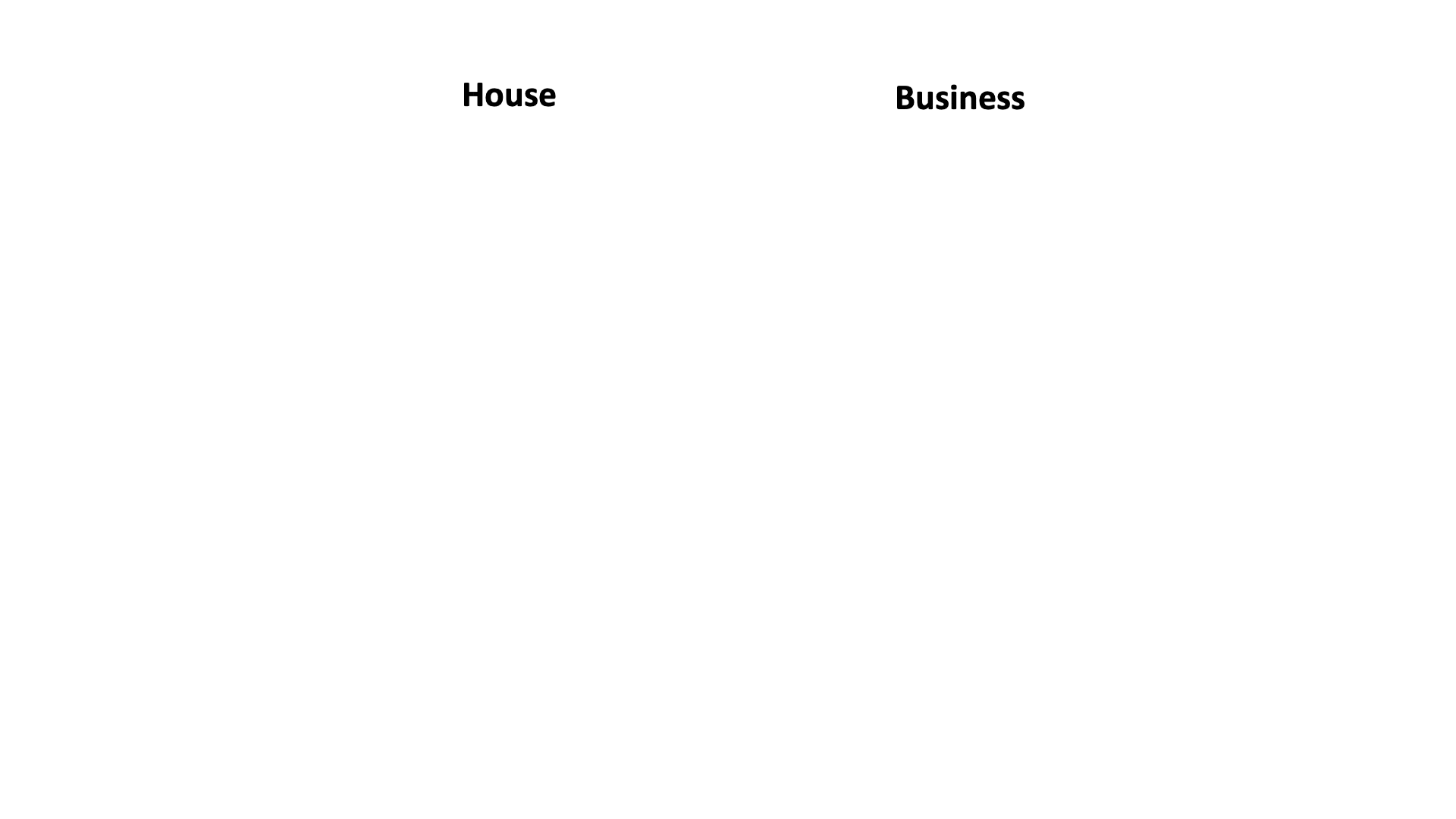
There’s a bit more nuance here, but let’s keep it simple for now and see how the 3 Core Characteristics of CFGAs also apply to Stocks.
If you buy ownership in a business, you will have to pay a Price Per Share (✓). This entitles you to ownership of a part of the business.
After the purchase, you would be a ‘Shareholder‘ (or ‘Stockholder‘). As a Shareholder, you are entitled to receive a proportional share of the Cash Flow (✓) distributed by the business. In Finance, we call these cash distributions to shareholders Dividends.
If you change your mind and decide that you no longer want to keep your share of ownership, you can Sell (✓) it to someone else at the current Price Per Share. That price might have changed since you initially bought the Stock. If the Price Per Share increases at the time you sell, you would generate a Gain.
Quick Check: 3 Core Characteristics Satisfied?
We have satisfied all 3 Core Characteristics. We pay a Price Per Share for a unit of ownership. We then collect cash flows in the form of Dividends. Then, we ultimately aim to sell for a higher Price Per Share down the road. In short, Stocks work in the exact same way as a Business.
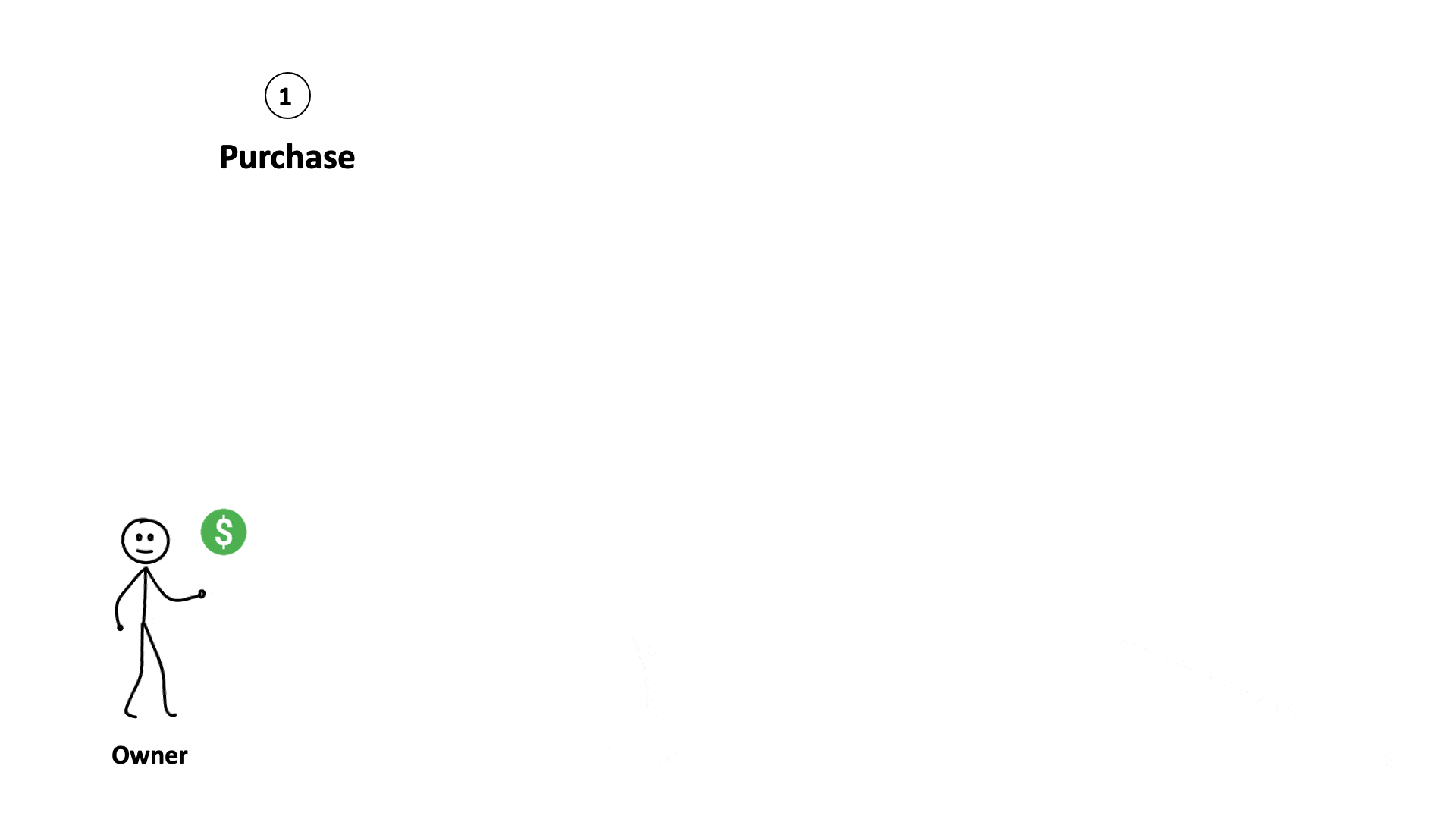
Quick Note: What Makes Stocks Move
Another key aspect of understanding how Stocks work is learning what drives Price movements in Stocks. When we see shares of stock trading in the Stock Market, what we are seeing is investors re-valuing ownership in a business (up or down) every day which causes the value of a unit of ownership to go up or down.
Wrap-Up: How Houses, Business and Stocks Work
In summary, Houses, Businesses, and Stocks are all Cash-Flow Generating Assets. They can be Purchased in Cash, Generate Cash Flows, and can be Sold for Cash which generates a Gain (or Loss).
As you continue your Finance learning journey, we recommend you re-visit this Mental Model on how Stocks work. Solid Mental Models create a strong foundation to help you tackle more complicated concepts as you progress in your career.
One quick final note here. While all three examples are important to understand, in our experience, students tend to do best when they anchor back to the House example. This is because it’s the most familiar of the three examples in terms of everyday life. So, if you get stuck, anchor back to the house example!
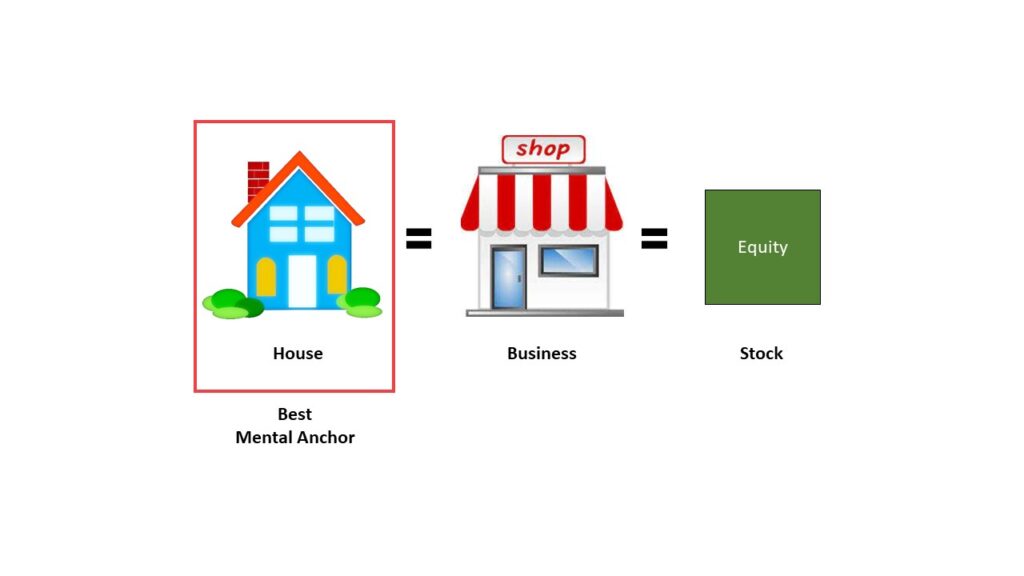
In our next article in the series, we’ll explore how the same 3 Core Characteristics of CFGAs also apply to any type of Debt (Bonds, Loans, etc.).
If you’ve enjoyed this article and are aiming for a Finance career, check out our World Of Finance: Buyside vs Sellside article and explainer video.
In the meantime, let us know if you have any comments or questions below.
